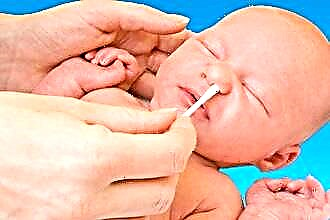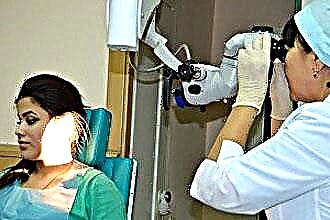A runny nose is an inflammatory process localized to the nasal mucosa. In this case, the cause of rhinitis is most often infectious diseases that arise against the background of a weakened immune system. Many parents do not even think about whether it is possible to walk with a baby with a cold. Most often, adults try to provide the child with bed rest, believing that during an illness it is better to completely exclude walks. But if the patient does not have a high temperature, then fresh air will only benefit the baby.
Determining factors
Despite the fact that fresh air is good for children of different ages and walking is necessary even for infectious diseases accompanied by a runny nose, there are several important factors that influence the decision on the advisability of going outside during illness. Before answering the question of whether it is possible to walk with a child with a cold, you need to pay attention to such points as:
The patient's well-being
 If rhinitis is accompanied by high fever (above 38 degrees), general weakness, drowsiness, then it is best to postpone walks until the body temperature returns to normal. If the child feels normal, then it is advisable to go out into the fresh air, but exclude outdoor games.
If rhinitis is accompanied by high fever (above 38 degrees), general weakness, drowsiness, then it is best to postpone walks until the body temperature returns to normal. If the child feels normal, then it is advisable to go out into the fresh air, but exclude outdoor games.
Important! If walking during illness is not possible, then in this case it is necessary to ensure the maximum flow of fresh air into the room where the child is, by means of regular ventilation.
Age
Going out into the fresh air is indicated in the presence of a runny nose in children of any age. However, when it comes to newborns in the first days of life or premature babies, then it is best to refrain from walking, especially in the autumn-winter period.
Rhinitis causes
Often, allergic reactions can cause a child's runny nose, especially in the spring-summer period, during active flowering, as well as in frosty weather (allergy to cold). In this case, you should exclude going outside, close windows at home, humidify the air in the room using wet cleaning or a humidifier. Also, contraindications to walking are severe bacterial infections (pneumonia, tonsillitis), requiring bed rest. In all other situations, going outside, even with a baby, is not only not contraindicated, but will also contribute to a speedy recovery. For example, if repair work is being carried out in the room where the baby lives and the cause of the runny nose is an allergy, then in this situation, fresh air will be the main assistant in treatment, helping to clear the lungs and bronchi, and remove accumulated phlegm. Also, in infants, a runny nose often occurs during teething, which is not a contraindication to walking.
Outdoor air temperature
Children of any age and any weather are allowed to go outside if they have a cold. The exceptions are situations when the outside air temperature drops below minus 10-15 degrees, as well as in case of strong gusty winds, heavy precipitation.
It should also be borne in mind that for half an hour after some physiotherapy procedures, such as inhalations, heating baths, compresses, etc., you must not go outside.
Mechanism of protective action
It is known that it is the nose that is the main obstacle to the penetration of various infections and dust into the body. When an excessive amount of harmful substances accumulates in the nasal cavity, the body activates the protective properties, as a result of which a runny nose appears, the nasal mucosa swells. Also, during the cold season, the air warms up in the nose before entering the lungs.
With a runny nose, outdoor walks are shown even in winter. They will be especially effective in parks and forests, far from busy highways and hazardous industries. During the walk, the following happens:
- moisturizing the nasopharyngeal mucosa, breathing easier;
- hardening the body due to small temperature changes, strengthening the child's immune system;
- normalization of blood circulation, the amount of toxins and harmful microorganisms in the nasopharynx decreases under the influence of fresh wind.
When the child is outside, it makes sense to ventilate the room.
Features and contraindications
In order for the walks to be not only harmless, but also benefit the child and not harm others, parents need to know some features and contraindications:
 remember that the patient carries an epidemiological danger to others, however, many experts argue that the likelihood of infecting other children, especially in winter, when it is freezing outside, is minimized;
remember that the patient carries an epidemiological danger to others, however, many experts argue that the likelihood of infecting other children, especially in winter, when it is freezing outside, is minimized;- it is necessary to give preference to calm games in order to exclude the likelihood of overwork and inhalation of frosty air through the mouth;
- the duration of the walk in the cold season and windy weather should not exceed twenty minutes;
- before going outside, doctors recommend clearing the nasal passages, ensuring normal nasal breathing;
- it is important to dress the child correctly, choosing clothes according to the weather, so as not to overheat him, and not to dress him too lightly.
Important! A child who is already walking on his own should be dressed a little lighter than himself, and a baby a little warmer, since he is in a stroller.
It should also be understood that inhalation of cool air significantly increases the blood supply to the mucous membrane and tissues of the nasopharynx and bronchi, which contributes to better mucus excretion, activation of secretory glands. That is why, often during a walk in the fresh air, a child's productive cough intensifies, which was not at home, which, however, is not a reason to leave the street, but, on the contrary, is a positive sign that allows you to cough up sputum more productively. That is why, in case of respiratory diseases such as whooping cough, croup or obstructive bronchitis, inhalation of clean and cool air is one of the most important factors in treatment, along with various medications. It is also important to understand that cold, clean air is one of the most effective ways to provide first aid for various diseases accompanied by breathing difficulties.
Now the search for an answer to the question of the advisability of walking in the fresh air will not cause difficulties. The main thing is to correctly assess the components "for" and "against", to choose the optimal conditions for a walk.

 remember that the patient carries an epidemiological danger to others, however, many experts argue that the likelihood of infecting other children, especially in winter, when it is freezing outside, is minimized;
remember that the patient carries an epidemiological danger to others, however, many experts argue that the likelihood of infecting other children, especially in winter, when it is freezing outside, is minimized;

